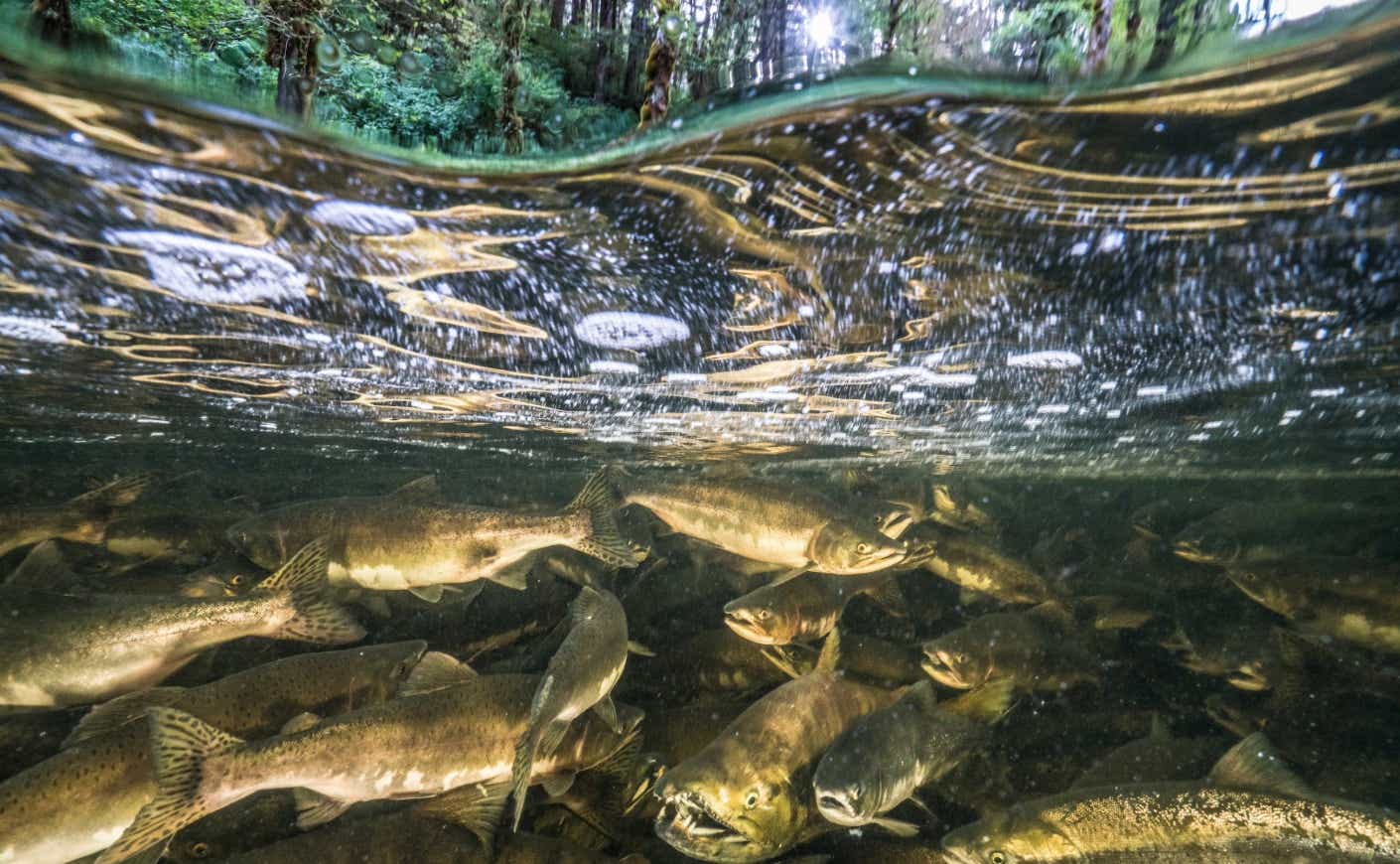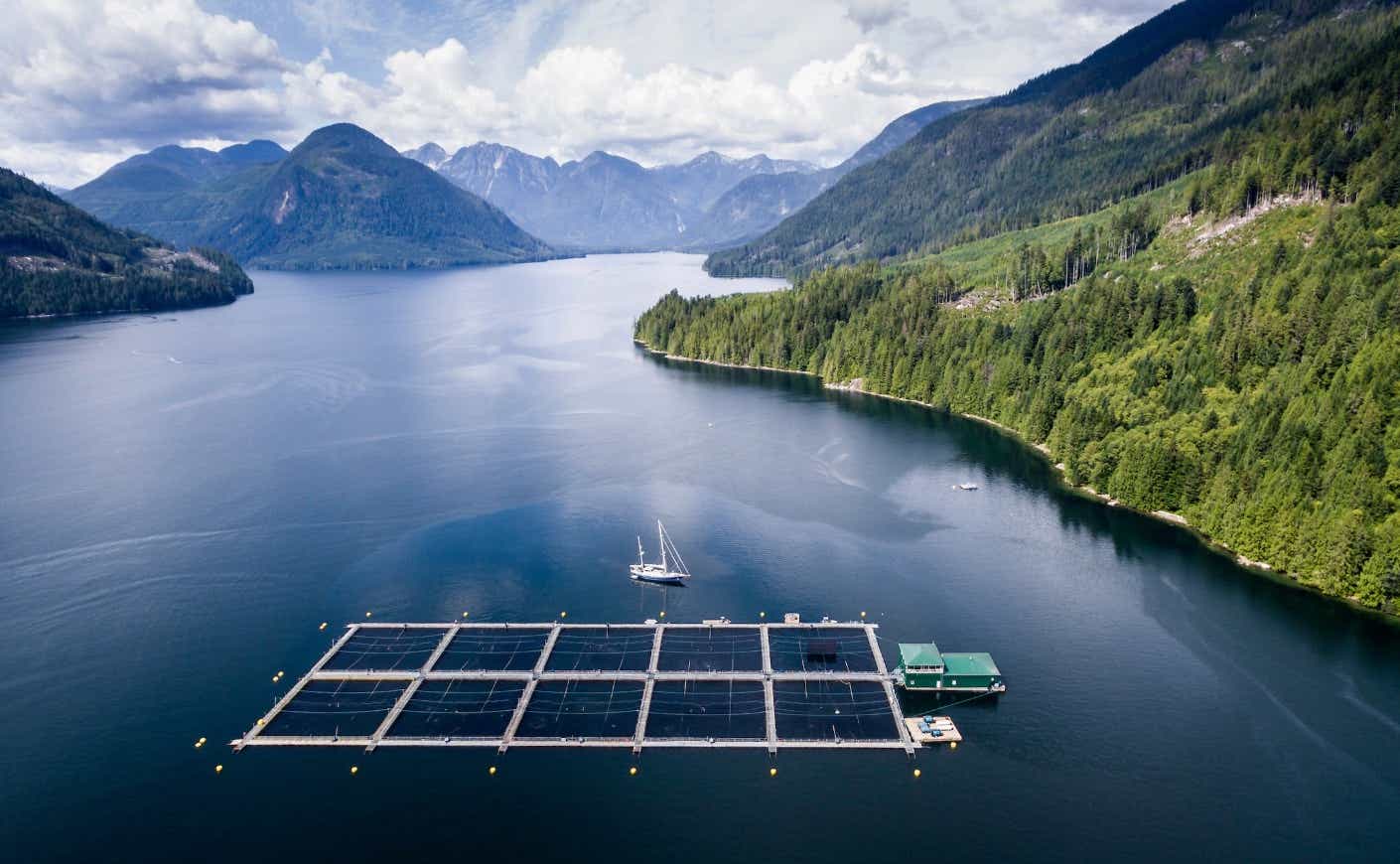As dawn's first light touched the surface of a remote river in British Columbia (BC), Alaska’s neighbor to the south, the water teemed with life. I photographed the salmon's journey unfolding before my eyes, amid the cool, clear currents. With so many fish, it was as if I could walk across the river without getting my feet wet. Born in these very waters, these remarkable fish have spent years traversing the ocean, only to return to their birthplace, driven by ancient instinct. This is the salmon run, a dramatic event where millions of salmon fight upstream against all odds to spawn the next generation.
This annual event is remarkable in more ways than one. Salmon are what we call a keystone species because they support entire ecosystems. They feed iconic species like orcas, bears, and eagles, but they also enrich the surrounding environment, as marine nitrogen from the salmon carcasses acts as fertilizer for the lush forests. For millennia, these cycles have been crucial to First Nations, who honor the salmon as a staple food source and a sacred symbol of renewal and life. The salmon's story is one of nature's most captivating dramas in a timeless narrative that sustains both land and sea.

Yet, beneath the surface lies a troubling truth: This abundance is becoming a rare sight in BC, as wild salmon populations are in serious decline. In contrast, Alaska’s wild salmon population remains much healthier than BC’s, but why? While there are multiple factors at play, including climate change and habitat loss, the difference is likely due to one key distinction: Salmon farming is prohibited in Alaskan waters.
When I first moved to BC, I had no idea that the wild salmon here were in such great danger. Open-net salmon farms have proliferated along BC’s remote coastline, and even if you’re reading this from the U.S., there’s a good chance that the farmed salmon in your grocery store is from BC. I once believed these farmed fish to be a solution to the dwindling wild stocks, but this is sadly not the case. I have been underwater at these open-net salmon farms, and based on what I saw, I would personally never eat farmed salmon.
While farmed salmon is more affordable than wild-caught, cheaper is not always better. Farmed salmon are mass-produced in marine feedlots to meet market demands, while wild salmon fisheries follow strict rules for sustainable harvest, limiting supply. However, in order to produce farmed salmon at such large scales, the nutrition that you find in wild salmon is lost — and the ecological price is enormous.

Regardless of our preferences, there is a stack of scientific evidence that gives us all the more reason to avoid buying fish that’s been sourced this way.
These open-net farms are situated directly in the ocean, often along wild salmon migration routes. These pen-raised fish are fed with wild fish, and it takes at least four pounds of wild fish to grow one pound of farmed salmon, completely negating the argument that salmon farms relieve stress on wild fisheries.
Farms take advantage of the marine environment's ecosystem services, allowing uneaten fish feed and waste to accumulate on the seabed and fostering and facilitating the open exchange of diseases. While some of these diseases originate in the wild, the high density of farmed salmon gives them the opportunity to proliferate at unnatural rates.
Farmed salmon have been domesticated and lack the instincts that wild salmon are born with. When farmed salmon escape, they hybridize with wild salmon and lower their ability to survive in their natural environment.
Supporters of salmon farms promise that sustainable innovations are addressing these concerns, but there’s no evidence that wild salmon are any better off.

It is important for Canadians to vote — and even if you’re not Canadian, small actions go a long way to let open-net salmon farms know they are not the welcome solution they claim to be.
As you write your shopping list for the week, or prepare a delicious salmon dinner from one of Katie’s recipes, take a second to think about that pristine river with healthy wild salmon. We want to see more of this in BC again. While the lower price may be tempting, consider avoiding farmed salmon. Buying wild salmon is a vote against open-net farms, and it supports a future for BC with healthy wild salmon populations.
Paul Nicklen and Cristina Mittermeier co-founded SeaLegacy in 2014. SeaLegacy’s mission is to inspire people to fall in love with the ocean, amplify a network of changemakers around the world, and catalyze hands-on diplomacy through hopeful, world-class visual storytelling. For more updates on their meaningful work, learn more about SeaLegacy, and subscribe to Ripple Effect, Katie Couric Media’s sustainability newsletter.









